 Be Inspired Blog - Arizona
Be Inspired Blog - Arizona
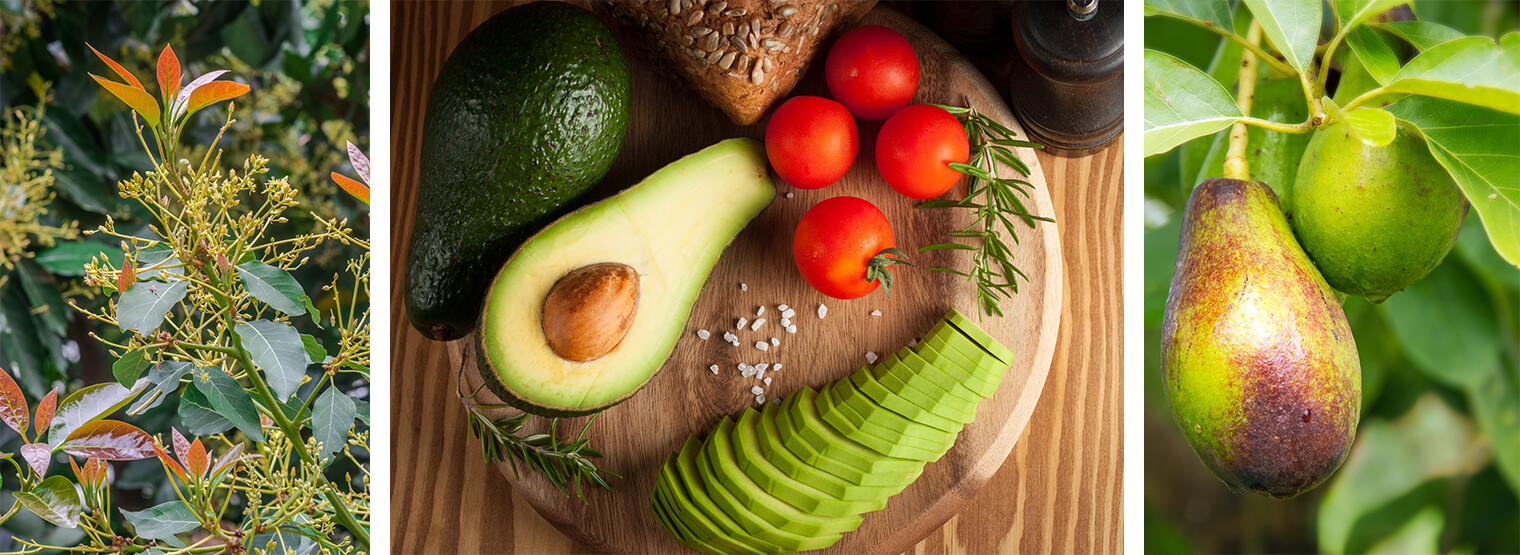
How to Start Growing Avocados in the Arizona Heat
Whether they’re cut in slices on toast or they’re served up as a big bowl of guacamole next to chips, there’s no question that avocados have a significant fan base in our hearts and stomachs. Although their skin is ugly and tough, an avocado’s exterior keeps out pesticides and the inner fruit is packed with nutrients. If you’re a big fan of this oblong fruit, have you ever imagined growing them in the Arizona heat?
Keep reading to find out how to work with our local climate and for helpful tips to get started planting delicious avocados.
Growing Avocados in Arizona’s Harsh Climate
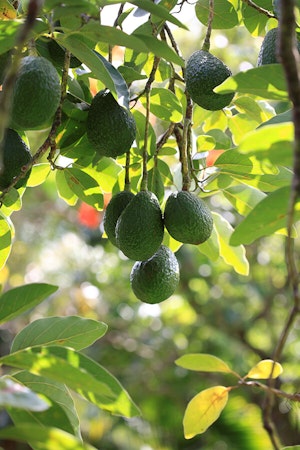 With a dry climate and little rainfall, Arizona may be a tough geographic area for planting anything that hopes to take seed. However, with your care and attention to detail, you can still make your avocado growing dream a reality. According to city-data.com:
With a dry climate and little rainfall, Arizona may be a tough geographic area for planting anything that hopes to take seed. However, with your care and attention to detail, you can still make your avocado growing dream a reality. According to city-data.com:
“Arizona’s climate varies widely by altitude. Southern Arizona, including Phoenix and Tucson, has very hot summers and mild winters, with cooler summertime temperatures in the Chiricahua Mountains in the southeast corner of the state. Northern Arizona has four seasons, but the weather is mild.”
Taking this into account, you will want to provide your avocado plant appropriate coverage until it can develop a strong deep root structure with dense foliage for protection. Give your young tree time to acclimate itself to a new location. This is an important tip because at least 50 percent shade is required for your young avocado tree to protect itself against strong sun rays that can damage your sapling. Planting your avocado tree on the east side of your property is the best place for it to prosper with morning sun and afternoon shade.
As recommended by Phoenix Tropicals, try placing your avocado tree near a deciduous tree so that it gets more coverage to protect its sensitive bark during Arizona’s hot summers. When the leaves have fallen near winter time, it can appreciate the benefits of the sun without consequence. If you do not have a deciduous tree nearby, you can always create a shade structure and provide openings for the plant to grow around, however, most avocado varieties will not need as much protection as they grow older.
What Avocado Type is Best for Growing in Arizona?
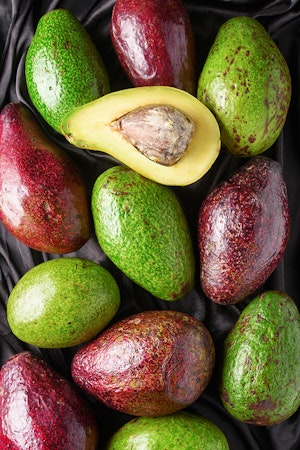 Despite covering your tree with shade, the Haas variety may struggle the most with the summer heat. You can search our selection of avocado varieties to start your own in Arizona, and maybe even take on the Haas as your own personal challenge. SummerWinds carries the following avocado trees, available seasonally, while supplies last:
Despite covering your tree with shade, the Haas variety may struggle the most with the summer heat. You can search our selection of avocado varieties to start your own in Arizona, and maybe even take on the Haas as your own personal challenge. SummerWinds carries the following avocado trees, available seasonally, while supplies last:
- Carmen Hass
- Hass
- Holiday Little Cado
- Lamb-Hass
- Pinkerton Avocado
- Stewart Avocado
When to Start Planting Your Tree
The ideal months for planting avocados in the Valley are March, April, September and October.
Planting your avocado tree is best done in the fall and winter. If you decide to plant in the early spring, it is not an impossible task, but there is more risk of sun damage and extra maintenance to keep your tree in tip top shape. In the low desert, there are chances for climate extremes unlike the mild and humid climate of the tropics where avocado trees are natives. When caring for an avocado tree in the desert, you’ll need to make-shift a compatible microenvironment for your plants.
How to Start Growing Your Avocado Tree
If you have decided to take the leap and start growing your own avocados, here’s what you should do to get started according to Garden Guides and SummerWinds:
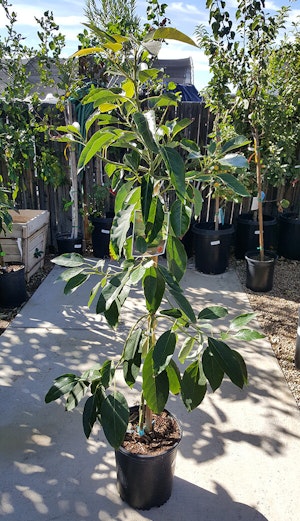 Remove any existing grass and weeds hanging around the planting site. Grass and weeds will compete with the avocado tree for nutrients.
Remove any existing grass and weeds hanging around the planting site. Grass and weeds will compete with the avocado tree for nutrients.- Dig an hole that is twice as wide as the container size of the plant and no deeper. to test soil permeability and drainage for your plant.
- Saturate the hole with 5 gallons of water and wait for it to drain.
- After an hour, once the water has drained from the hole, water it with another 5 gallons and wait another hour.
- Check the hole after 24 and 48 hours to see if there is still water remaining in the hole.
If there is water remaining in the hole after 24 hours, this means that you need to supplement the soil to improve the drainage. After 48 hours, if there is water still remaining in the hole, you can improve your drainage by amending your soil, add some rocks to the bottom of the hole, or plant your avocado tree on a mound, in a raised bed or in a large container instead. As a plus, avocados in containers can make attractive foliage plants for your home!
If there is no water remaining when you check, gently place your tree in the hole and pack the mixed soil, compost and sand around the root ball of your avocado plant. Alternatively, you can fill the hole with a 50/50 mixture of the original soil and SummerWinds' Planting Mix.
To improve drainage, we recommend using a product such as Fertilome's HuMic or Arizona's Best Alka Liche. For additional suggestions, speak with one of our Trusted Garden Advisors. For fertilizer, SummerWinds recommends using E.B. Stone Organics All Purpose Plant Food or our Fertilome Tree & Shrub Food. You can apply these plant foods directly to the roots around the tree on a regular basis. Fertilizing an avocado tree year-round can help your tree become cold tolerant.
For information about using elevated garden beds, you can refer to our site here.
Watch Our How-to-Plant a Tree Video
Voila, you have officially planted an avocado tree!
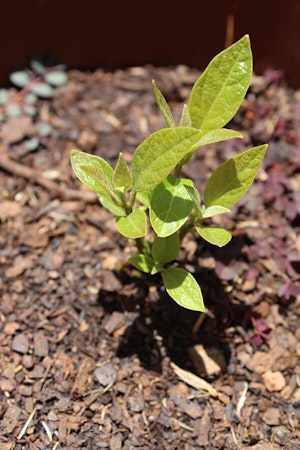 Mulch is Great for Your Growing Avocado Tree
Mulch is Great for Your Growing Avocado Tree
In spring and fall, providing a 3-inch to 4-inch layer of mulch about 6 inches away from the trunk can be your tree’s first line of defense against collar rot. Mulch is a great aid to an avocado tree because it reduces water evaporation and the decomposing leaves create a hostile environment for the microorganisms that cause root rot.
To spot root rot, look for dieback in the canopy, leafless tips on the branches and more. If you can’t find roots within 6 inches of the soil’s surface, your plant may have the disease. For extra supplementation, try worm castings, fish emulsion and organic composts.
Watering Your Growing Avocado Tree
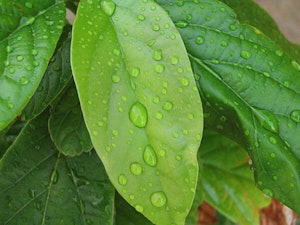 The East Valley Tribune says that during the summer, you should water your avocado tree every three to five days, but November through January, water every three weeks. Make sure that the water penetrates down your tree’s roots at least three feet.
The East Valley Tribune says that during the summer, you should water your avocado tree every three to five days, but November through January, water every three weeks. Make sure that the water penetrates down your tree’s roots at least three feet.
One of the biggest challenges that you’ll face is the salinity of the soil in Arizona. The salt in the water with the heavy clay soil can be detrimental to your plant, so remember to water slow and deep, and to let the soil dry out before watering it again.
If you’re worried that your tree’s leaves are showing signs of salt burn, try deep soaking by turning the hose on very low at the base of the tree for several hours to wash away the salt to the edges of the soaked soil. You can also try using the basin irrigation watering method to protect your tree and push the salt away from its roots. If you decide to plant your avocado in a container, your tree will need consistent and frequent watering.
Avocado Tree Pruning
When it comes to avocado trees, less pruning is best; don’t prune in the early spring or late summer either because the newly cut branches would be exposed to colder temperatures and frost. If you must trim, do it during a period of time when the weather isn’t extremely hot or cold, such as in the middle of spring or fall.
Frequent small pinches are a good method for shaping larger trees rather than heavy pruning, which could damage your young plant. Another benefit of light trimming is an improvement of air circulation and fruit quality.
What to Expect After Growing Avocados
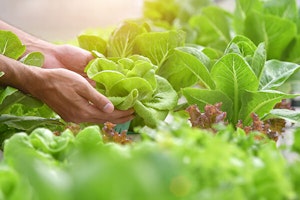 There may be challenges to growing sub-tropical fruits in non-native locations like Arizona, but this fruit is worth the bragging rights. Though it is rare to see avocado trees in our desert climate, it doesn’t mean you can’t have a fruit-producing avocado tree!
There may be challenges to growing sub-tropical fruits in non-native locations like Arizona, but this fruit is worth the bragging rights. Though it is rare to see avocado trees in our desert climate, it doesn’t mean you can’t have a fruit-producing avocado tree!
Interestingly, avocados do not ripen on the tree and a mature avocado could be hanging from a branch for several months. You will know when the fruit is mature when it is large and still hard. Don’t be afraid to pluck it off the branch, but refrain from eating it until it has ripened at room temperature. Your harvests may alternate with bumper crops one year and a sparse crop the following, so have patience with this special plant.
Why Growing Avocados Are Worth It
 Imagine after all the time you’ve invested that you’re finally delving into your chips and homemade guacamole, skipping the grocery store’s high prices for the fruit. You can proudly say that the avocado in your hand is the one that you grew and babied from the beginning. It’s a wonderful feeling that you can continue to enjoy yearly as long as you put the work in.
Imagine after all the time you’ve invested that you’re finally delving into your chips and homemade guacamole, skipping the grocery store’s high prices for the fruit. You can proudly say that the avocado in your hand is the one that you grew and babied from the beginning. It’s a wonderful feeling that you can continue to enjoy yearly as long as you put the work in.
Don’t be afraid to go after a gardening challenge; the fruits of your labor will pay off, and this experience is a great stepping stone on a path to planting other non-native tropical plants in your garden. Are mangoes and bananas next on your list?
If you’re interested in getting started on cultivating your own avocado tree and would like some assistance, speak to one of SummerWinds’ Trusted Garden Advisors for help.

